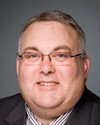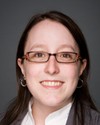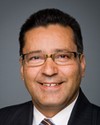Great. Thank you very much, Mr. Chairman. I really appreciate the opportunity the PROC committee is providing to allow me to appear before you with regard to the electoral boundaries commission and to represent the citizens of Calgary Centre so their voices can be heard. That's why I was elected. That's why each of us was elected. I have been hearing from Calgary Centre residents very loudly and clearly.
I'd like to say that I really appreciate, as do they, the fact that the electoral boundaries commission has set as its goal to equalize the weight of each Canadian's vote. It will strengthen democracy. The changes I'm proposing here will leave all the ridings affected within plus or minus 5%, give or take, of the target population. They are strongly supported by the community. No MPs are opposed, and further, they're all within the current boundaries of Calgary Centre right now.
I'd like to make a point about recent history, and then provide three reasons that the commission's new map contravenes the three major objectives set out in the act. I'll argue that the population goal is achieved at the expense of them, and conclude how it can be achieved with these three goals in mind—to rousing applause, no doubt.
The recent history is that as you might recall, the former MP resigned in May. That meant the residents of Calgary Centre did not have a sitting member of Parliament throughout the bulk of the redistribution consultation. As a result, they feel the radical changes that are being proposed to their riding did not receive the attention they deserved.
I was sworn in on December 11, just as the report of the boundaries commission was coming down on December 13. I've heard from my residents over and over, and now I'm here appealing the changes on their behalf. As much as possible these changes we're proposing reflect historical patterns and communities of interest, and they follow the traditional provincial, federal, and municipal boundaries.
There are three reasons that the proposed map should be rejected. Number one, it's radical surgery that's unnecessary. Number two, it's kicking folks out of their historical homes. Number three, it's putting together strange bedfellows.
To the radical surgery, Calgary Centre is currently overpopulated and is therefore under-represented in Ottawa. It's just a question of which area to place in another riding in order to reduce its size. Because this riding is characterized by constant growth, it should really be a priority to maintain cohesion in a riding that's accepting newcomers at the rate of tens of thousands every year.
I was seeking an analogy to describe what the boundaries commission recommended, and it's kind of like slicing off one entire side of your body to lose weight, and then realizing that you cut off too much so you're going to graft on an appendage on the other side. That's essentially what's been done here.
You see the map there. Sarcee Trail is the large ring road on the right. Now, neither of these is the original riding.
On the left-hand side is the Calgary ring road. You'll see that Sarcee Trail is the Calgary ring road. Essentially, what the boundaries commission did was move the boundary on the east side to the middle of a series of residential communities that are very cohesive, residential communities whose traffic patterns are east-west, and it disrupted that long-standing community.
That brings us to number two, which is kicking folks out of their historical home. This community on the east side of the ring road....





